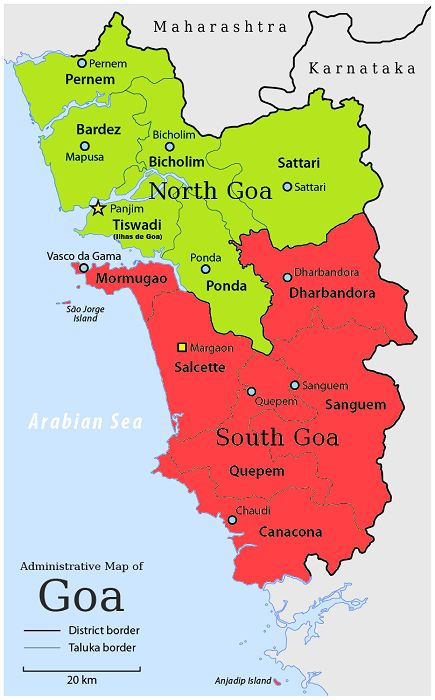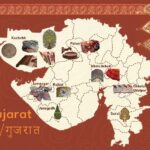Goa: A Complete Overview and Its Impact on Society
Introduction
Goa, the smallest state in India by area, is known for its pristine beaches, vibrant culture, and rich heritage. Beyond its tourist appeal, Goa has a unique identity that influences various aspects of Indian society. This article explores the history, significance, and contributions of Goa.
It is a small state on the southwestern coast of India, renowned for its beaches, rich cultural heritage, and vibrant tourism industry. It was the first state to be liberated from Portuguese rule, in 1961, and became a part of India. Goa is known for its colonial architecture, diverse population, and laid-back lifestyle.
Geography & Demographics:
- Area: 3,702 sq. km (smallest state in India).
- Population: Approximately 1.5 million (as per 2011 Census).
- Capital: Panaji (also known as Panjim).
- Largest City: Vasco da Gama.
- Major Rivers: Mandovi, Zuari, and Chapora.
- Beaches: Famous beaches like Baga, Anjuna, and Palolem are central to its tourism industry.
History:
- Colonial Past: It was under Portuguese rule for over 450 years (1510 to 1961), which has greatly influenced its architecture, culture, and traditions.
- Liberation from Portugal: Goa was annexed by India in 1961, after a military operation known as Operation Vijay. It was integrated as a union territory until it became a full-fledged state in 1987.
Culture and Heritage:
- Language: The official language is Konkani, but Marathi is also widely spoken. English is commonly used, especially in tourism and education.
- Religion: It has a mixed population of Hindus and Christians, with a smaller Muslim community. The state’s religious festivals, such as Carnival, Shigmo, and Christmas, are celebrated with great enthusiasm.
- Cuisine: Goan cuisine is a blend of Portuguese and Indian flavors, known for its seafood, spicy curries, and vindaloo. Feni, a local alcoholic drink made from cashew apples or coconut, is a popular beverage.
- Art and Music: It is known for its music scene, especially Goa trance, and the state hosts various international music festivals like Sunburn and VH1 Supersonic. Traditional arts such as Konkani theater, tiatr, and mando (a type of folk music) are also significant parts of the culture.
Economy:
- Tourism: It is one of India’s top tourist destinations, attracting visitors for its beaches, heritage, adventure sports, and vibrant nightlife. It contributes significantly to the state’s economy.
- Agriculture: It is known for producing cashew nuts, coconuts, and rice. The state’s fertile soil also supports the cultivation of fruits and vegetables.
- Mining: It was historically known for its iron ore mining industry, though environmental concerns and regulations have led to a decline in mining activities.
- Fishing: Fishing, especially seafood, is another important part of the state’s economy.
- Services and IT: The state is gradually developing its services sector, particularly in Information Technology (IT), education, and healthcare.
Governance & Politics:
- State Government: It has a unicameral legislature, consisting of a 40-member Legislative Assembly.
- Current Chief Minister: Pramod Sawant (as of the latest updates), from the BJP (Bharatiya Janata Party).
- Political Parties:
- BJP (Bharatiya Janata Party) has been a dominant force in recent years.
- Indian National Congress (INC) has historically been strong in the state.
- Regional parties like Goa Forward Party and MGP (Maharashtrawadi Gomantak Party) have also played a role in shaping the state’s politics.
Tourism and Attractions:
It is internationally known for its beaches, forts, and churches, drawing millions of tourists annually. Some of the key attractions include:
- Beaches:
- Baga, Anjuna, Palolem, Vagator, and Calangute are among the most popular beaches, offering water sports, beach parties, and relaxation.
- Heritage Sites:
- Basilica of Bom Jesus and Se Cathedral, both UNESCO World Heritage Sites, are examples of Goa’s Portuguese legacy.
- Fort Aguada and Chapora Fort offer scenic views and historic relevance.
- Wildlife:
- Goa’s wildlife sanctuaries, such as Bondla, Salim Ali Bird Sanctuary, and Cotigao, are home to diverse flora and fauna.
- Festivals:
- Carnival (held before Lent) is the largest festival in Goa, with colorful parades, music, and dancing.
- Shigmo, the Goan version of Holi, is celebrated with traditional dances and festivities.
- Diwali and Christmas are celebrated with great fervor, blending traditional customs with Goan cultural practices.
Social Issues & Challenges:
- Environmental Concerns: Overdevelopment due to mass tourism, pollution, and the decline in biodiversity due to mining activities are ongoing challenges.
- Youth Migration: Many young Goans migrate for better career opportunities, leading to concerns about the state’s aging population.
- Infrastructure: While tourism has boosted infrastructure, issues like waste management, traffic congestion, and adequate public transportation need attention.
History and Background
It has a rich historical background influenced by various rulers and colonial powers. Some key historical milestones include:
- Pre-1510: Goa was ruled by several dynasties, including the Kadambas and Vijayanagara Empire.
- 1510: The Portuguese conquered Goa, establishing a strong European influence.
- 1961: Goa was liberated from Portuguese rule and became a part of India.
- 1987: Goa was granted statehood, becoming India’s 25th state.
Political Significance
It’s political landscape is marked by diverse influences and unique governance challenges. Some important aspects include:
- Tourism Policies: Government initiatives to promote sustainable tourism.
- Cultural Preservation: Efforts to maintain Goa’s distinct heritage and traditions.
- Economic Growth: Balancing tourism with industrial development.
Daily Life and Its Impact
It’s unique blend of modernity and tradition has a profound impact on daily life, influencing:
- Lifestyle: A relaxed and culturally rich way of living.
- Economy: Tourism, fishing, and agriculture as primary economic drivers.
- Education: Quality educational institutions catering to various fields.
- Healthcare: A robust healthcare system with public and private facilities.
Achievements and Contributions
It has made significant contributions in various sectors, such as:
- Tourism Excellence:
- Ranked among the top beach destinations in the world.
- Promotion of eco-tourism and heritage tourism.
- Cultural Heritage:
- UNESCO World Heritage Sites like Old Goa churches.
- Traditional festivals such as Carnival and Shigmo.
- Infrastructure Development:
- Improved road connectivity and international airport expansion.
- Promotion of smart city initiatives.
Importance in Indian Society
It holds a special place in Indian society due to its:
- Tourism Impact: A major revenue source for the nation.
- Cultural Diversity: Fusion of Indian and Portuguese influences.
- Environmental Focus: Conservation efforts for biodiversity.
Observance and Popularity
It’s charm attracts millions of visitors every year, and its observances include:
- Festivals: Celebration of Christmas, New Year, and local festivals.
- Cultural Events: Film festivals and music events drawing global attention.
- Spiritual Tourism: Visits to ancient temples and churches.
Interesting Facts
- It has over 50 beautiful beaches along its coastline.
- The state has the highest per capita GDP in India.
- The famous drink Feni is exclusive to Goa.
How Impacts Society
It’s impact is evident in multiple aspects, including:
- Providing employment opportunities in tourism and hospitality.
- Promoting India’s cultural diversity on a global scale.
- Advocating for environmental sustainability.
FAQs
Q1: What is famous for?
A: It is famous for its beaches, nightlife, and Portuguese heritage.
Q2: What languages are spoken?
A: Konkani is the official language, while English and Hindi are widely spoken.
Q3: Is safe for tourists?
A: Yes, it is considered a safe destination with a strong tourism infrastructure.
Wishing: How to Celebrate Its Essence
You can celebrate Goa’s charm by:
- Exploring its rich heritage and natural beauty.
- Supporting local artisans and crafts.
- Promoting responsible and eco-friendly tourism.
Conclusion
Goa is more than just a beach destination; it represents a unique blend of heritage, modernity, and cultural richness. It continues to captivate hearts and contribute to India’s diverse identity.










